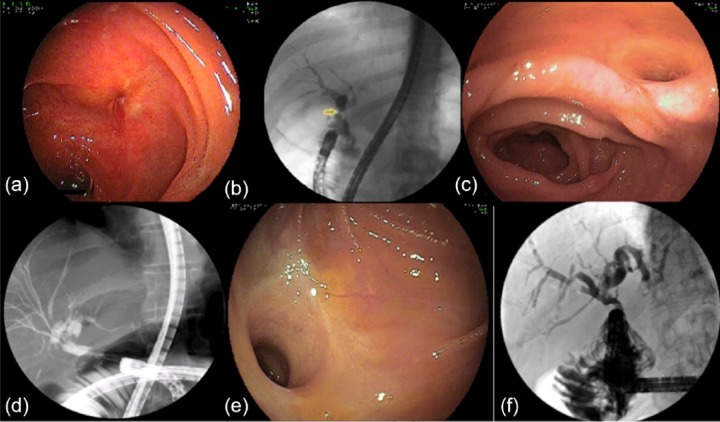Figure 8.
Hepaticojejunostomies. (a) Occasionally the hepaticojejunostomy is very small and can only be recognized by the presence of mucus or bile flow. This is a type A anastomosis based on the Mönkemüller and Jovanovic classification. (b) Cholangiogram reveals a short, tight stricture, type 1. Thus, the hepaticojejunostomy is type A1 (small opening, short stricture). (c) Normal or large opening hepaticojejunostomy (type B) anastomosis (large opening). (d) There are intrahepatic strictures and dilations (type 3). Thus, this is a type B3 hepaticojejunostomy anastomosis. (e) Direct cholangiography in a large, type C hepaticojejunostomy. Always perform a direct cholangioscopy using water, saline or carbon dioxide to distend the lumen, as direct insufflation of air into the bile duct is associated with air embolism. (f) The process of direct cholangioscopy and cholangiography is called endoscopic retrograde cholangioscopy and cholangiography.

